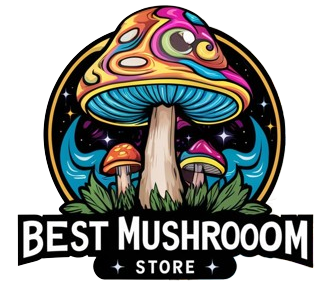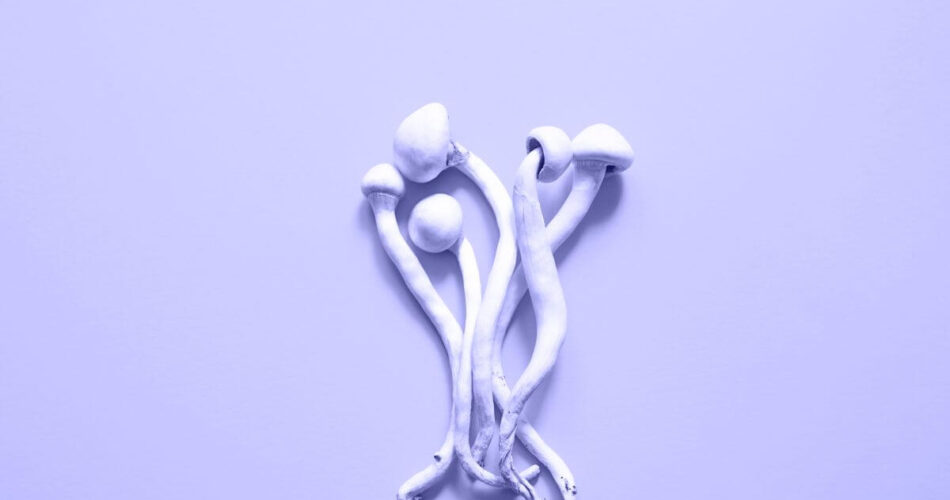What do shrooms look like? In this post, we’ll explore the world of magic mushrooms. We’ll also discuss some of the risks associated with their consumption and where you can find them. So, if you’re interested in these strange little fungi, keep reading!
Have you ever seen a picture of a magic mushroom and wondered what they look like in person? Wonder no more! This post will tell you everything about different types of it and answer the question: what do shrooms look like?
What Do Shrooms Look Like? Types of Hallucinogenic Mushrooms
Most people are familiar with the classic “toadstool” mushrooms with their white caps and red spots. However, there are many different types of mushrooms shrooms that can be found in nature. Some of these mushrooms are edible, while others are toxic. Here is a look at what do magic mushrooms look like and where do they come from.
Psilocybe Cubensis
Psilocybe cubensis is a type of mushroom that has become one of the most widely cultivated psilocin mushrooms in the world. It is known for its wide variety of morphologies, or physical forms, and for its diverse range of colors. This mushroom is native to tropical and subtropical regions of South America, Central America, and Southeast Asia. It has been found in Mexico, Brazil, Colombia, Ecuador, Peru, Venezuela, Costa Rica, Honduras, Panama, Thailand, Cambodia, Laos, Vietnam, India, and Nepal.
Psilocybe cubensis is a member of the Strophariaceae family of fungi.
This family also includes the well-known magic mushroom species Psilocybe mexicana and Psilocybe semilanceata. The Psilocybe cubensis mushroom grows on manure, compost, and dung. The mushroom is also known to grow on straw, coffee grounds, and other substrates.
The Psilocybe cubensis mushroom has a cap that is 3-8 cm in diameter. The cap is convex to flat in shape and has a brownish-red to reddish-brown color. The gills of the mushroom are adnate to decurrent and are white to grayish in color. The spore print of the Psilocybe cubensis mushroom is dark purple-brown. It has a white to yellowish stem that is 5-15 cm in length and 0.5-2 cm in diameter. The stem is hollow and has a fibrous texture. The taste of this mushroom is farinaceous, or mealy, and the smell been described as earthy, musty, or farinaceous.
Psilocybe Semilanceata
Psilocybe semilanceata, also known as the Liberty Cap, is a psychedelic mushroom that contains the psychoactive compound psilocybin. The mushroom has a conical cap with a small nipple-like protrusion in the center, and its stem is thin and fragile. Psilocybe semilanceata is found in Europe and North America, typically in damp, grassy areas such as pastures, parks, and lawns. The mushroom is most commonly found in the autumn months.
Psilocybe semilanceata is one of the most potent hallucinogenic mushrooms, with a psilocybin content of up to 1.78%. The psychoactive effects of Psilocybe semilanceata include visual and auditory hallucinations, altered perception of time, and feelings of euphoria. The mushroom can cause dizziness, nausea, and vomiting in some people.
Psilocybe Mexicana
Psilocybe mexicana is a species of psychedelic mushroom native to Mexico. The mushrooms are small, brown, and have a conical cap. They contain the psychoactive compound psilocybin, which is responsible for their hallucinogenic effects.
P. mexicana has been used in traditional Mexican shamanism for thousands of years. The Aztecs called the mushrooms teonanácatl, meaning “flesh of the gods”. It is widely cultivated and has been sold commercially since the 1960s. It is one of the most widely used psychedelics in therapeutic and spiritual settings.
P. mexicana can be consumed fresh or dried. When ingested, the mushrooms produce psychedelic effects that last for 6-8 hours. The experience is often described as being similar to a “trip” on LSD. P. mexicana is considered a safe and relatively gentle psychedelic, with a low risk of adverse effects. However, as with all psychedelics, there is a potential for negative experiences.
Psilocybe Cyanescens
Psilocybe cyanescens is a potent psychedelic mushroom that contains psilocybin and psilocin. It is found in wooded areas around the world and has a long history of use in shamanic and religious ceremonies. Psilocybe cyanescens is sometimes called “wavy caps” or “blue meanies” because of its blueish-green cap. The mushroom has a fruity, sour taste and a strong earthy smell. It is a small mushroom with a thin stem and a small cap. It is one of the most potent psychedelic mushrooms, with an active dose starting at just 2 grams.
Psilocybe cyanescens is found in wooded areas around the world. The mushroom grows on deadwood, such as stumps, logs, and bark. It is most common in the Pacific Northwest of the United States, but it has also been found in Europe, Australia, and Asia. The mushroom is relatively rare and is not often cultivated. These shrooms can be difficult to find because it grows on dead wood, which is often hidden beneath leaves and other vegetation.
These are only a few species of magic mushrooms and there are much more of them in the nature. If you are wondering: “what do shrooms look like?”, use only reputable websites, as some mushrooms may contain toxins and cause severe health problems or even death.
Magic Mushrooms vs. Deadly Mushrooms
There are several key differences between psilocybin mushrooms and poisonous mushrooms. The most notable difference is that psilocybin mushrooms contain the psychoactive compound psilocybin, while poisonous ones do not. This means that consuming psilocybin mushrooms can result in an altered state of consciousness, while consuming poisonous mushrooms will not.
While there are some key differences between psilocybin mushrooms and poisonous ones, it’s important to remember that not all mushrooms that contain psilocybin are safe to eat. Some mushrooms that contain psilocybin can be poisonous if consumed in large quantities or if they’re not prepared properly. Additionally, some people may be allergic to psilocybin mushrooms and experience adverse reactions after consuming them. Therefore, it’s always important to consult with a qualified professional before consuming any type of mushroom.
Never consume mushrooms that have been found in the wild unless you are absolutely certain of their identity. If you are unsure about the identity of a mushroom, it is best to err on the side of caution and avoid consuming it.
There is no way for a person to say if the mushroom is poisonous without having laboratory analysis done on the particular mushroom in question. Some common toxic mushrooms include: Death Cap, Destroying Angel, Fly Agaric Mushroom and False Morel. These mushrooms all contain compounds that can cause serious illness or death if consumed. If you believe you have ingested a toxic mushroom, seek medical attention immediately. Even if you know the answer to “what do shrooms look like?”, it’s better not to collect them on your own, because it’s possible to confuse them with dangerous species.
Are Magic Mushrooms Legal?
It is important to check your country laws before consuming magic mushrooms. Currently, magic mushrooms are not legal in the United States. Possession of magic mushrooms is a federal offense and can result in heavy fines and jail time.
Therapeutic use of magic mushrooms is legal in some countries, but it is important to check the laws in your location before consuming them. Some therapists have found that magic mushrooms can be helpful in treating conditions such as anxiety, depression, and addiction.
Similar Posts:
- Magic Mushrooms: How to Identify Magic Mushrooms and Types of Magic Mushrooms
- Types of Magic Mushrooms – Psychedelic Effects, Potency, Psilocybin Content, Characteristics, and More
- Psilocybe Subaeruginosa: Magic Mushroom From Australia. Spore Prints, Cultivation, Psilocybin Content
- Psilocybe Baeocystis – Unusual Psilocybin Species. Identification, Potency & Characteristics
- Psilocybin Mushroom: Where to Find Magic Mushrooms? Where Do Magic Mushrooms Grow?
- Alacabenzi Cubensis: A Hybrid Magic Mushroom with Powerful and Unique Effects
- Psilocybe Mexicana: Psilocybin Mexican Mushroom





